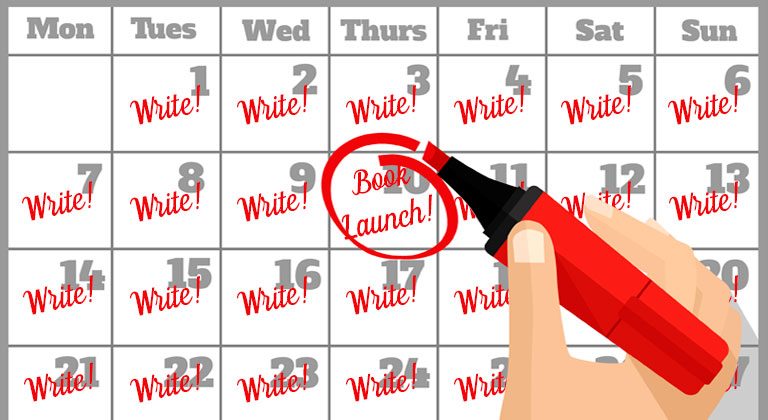5 Quick Writing Tips – An Editor’s Perspective
“This is how you do it: you sit down at the keyboard and you put one word after another until its done. It’s that easy, and that hard.” Neil Gaiman
One of the greatest gifts to my own writing was becoming an editor of other peoples’ books. It revealed the depths of talent out there in the world of self-publishing, and it inspired me to improve my own writing by seeing how good other writers could be. At the same time, I’ve noticed a few common issues that writers fall afoul of, some of which have very quick and easy solutions. These are just simple writing tips that I’ve learned along the way that massively improve the readability of a book.
Editing reminded me that writing isn’t an art – it’s a craft. You’re constructing a story from the raw materials – in this case, words – and there are infinite ways to assemble the finished product. Just like a table has to have legs and a flat surface, writing has to fulfill the purpose for which it was written; being able to communicate something clearly.
But once you’ve gone beyond the foundational – that’s where the ‘craft’ of writing comes in. Just as a dining table from IKEA is very different from one purchased from an antique store, carved from Adirondack Oak, a book that’s merely ‘clearly written’ is different from one that demonstrates craftsmanship in its words.
Although, lower your expectations. The writing tips I’m about to cover aren’t ‘craftsmanship’ – the fancy bells and whistles of a master craftsman (or woman.) They’re more like the tips an experienced carpenter might teach his apprentice. In fact, some of them might seem insultingly obvious (and if they are, I’m sorry, that means they aren’t meant for you.)
But as George Orwell said: “Sometimes, the first duty of an intelligent person is the restatement of the obvious.”
Here are the five most common issues I see that crop up time and time again in the books I edit; and while none of them spoil the quality of a book, addressing them definitely improves it.
1: Stop saying ‘said’
One of the worst things my creative writing teacher at university taught me was “said is invisible.”
He was pointing out how a lot of fledgling writers use flowery terms to express dialogue in their story, and that can make for a jarring reading experience. Every line of dialogue would be followed by “he growled” or “she responded” or something descriptive in the way the character expressed themselves – which sounds like the essence of great writing. In truth, though, those descriptive terms end up becoming distracting, especially in long sections of dialogue.
So my teacher suggested a common writing tip – use ‘said’ instead. ‘Said’ is like the kitchen chair of verbs. It’s so innocuous that people don’t really notice it. It might seem ridiculous, but if you compared two sections of writing and swap out more descriptive verbs (like ‘growled’ or ‘cried’) for ‘said’ then it becomes a lot easier to read.
However, the writing tip he should have taught was that you shouldn’t be using the word ‘said’ at all, if you can help it.
Writing is all about communication, and the verb ‘said’ should only be used when you need to communicate that somebody has said something. And notice I said need. Be critical of the way you write dialogue, and you’ll soon realize that you don’t need to say “he says” or “she says” nearly as often as you think you do.
Here is some dialogue from a recent book I edited (all examples in this article are used with the author’s permission):
“Damn,” he said, his eyes flashing. “We’re really going to do this, aren’t we?”
“D-do what?” I asked – and I was only half serious.
His lips curled.
“Don’t play coy with me,” he said.
I shuddered. “I’m done playing,” I said.
As an editor, I would argue you don’t need to use ‘said’ as much as the author does here, because it’s obvious who’s speaking. Especially in a back-and-fourth between two characters, the need to clarify which one of them is speaking becomes less and less important. Now read this version:
“Damn,” his eyes flashed. “We’re really going to do this, aren’t we?”
“D-do what?” I asked – and I was only half serious.
His lips curled.
“Don’t play coy with me.”
I shuddered. “I’m done playing.”
It’s not a massive change, and the book was perfectly fine before, but removing those extraneous ‘saids’ was like a craftsman sanding down a tabletop to a finer finish. It’s just a little bit of extra polish that improves the overall flow.
2: Use names when you need to
Another common issue I run into is a little more foundational, and almost the exact opposite of what we just discussed above.
The problem is the way some authors use ‘he’ and ‘she’ so blithely that it’s not always obvious who is actually doing anything. I’ve come across this issue most often in some of the steamier romance novels I’ve edited, but that could be because the nature of some of these scenes just exacerbates the problem. Take a reverse harem story, for example. When a girl is getting steamy with multiple lovers – you need a little more clarification than ‘he’ to be able to communicate exactly which man is putting what, where.
But to keep this article PG, I’m providing an example from a different type of book:
I bit my fist and watched Travis as he prepared himself for Roy’s next move.
Once again, the lumbering bouncer came in with an unsophisticated barrage of punches – swinging his big fists like they were sledgehammers.
Travis ducked easily out of the way, and then popped up under the reach of his burly arms to deliver a one-two combo of jabs that crushed his nose like it was a ripe tomato.
It would have been enough to put a regular fighter on the floor – but he just snarled and shook his head – bringing his fists down like he was a wrecking ball.
And this time, Travis wasn’t quick enough to escape them. Roy pounded both his huge hands into his back, and he was slammed to the dirt like a sack of potatoes.
He had just enough time to roll aside, and avoided his boot as Roy brought it crushing down onto the dirt where his head had been a second earlier.
As you can see from this fight scene, it’s not easy to figure out which person’s doing what when you just use the term ‘he’ or ‘his’ interchangeably.
This is why it’s a good idea to use names whenever you need to, for clarification. If that seems a little clunky (Travis did that, then Travis did this) you should come up with a second, consistent descriptor for that character (like in the edited version below where Travis is also identified as the narrator’s ‘ex-boyfriend’ and Roy is identified as ‘the bouncer.’)
I bit my fist and watched my ex-boyfriend as he prepared himself for Roy’s next move.
Once again, the lumbering bouncer came in with an unsophisticated barrage of punches – swinging his big fists like they were sledgehammers.
Travis ducked easily out of the way, and then popped up under the reach of Roy’s burly arms to deliver a one-two combo of jabs that crushed Roy’s nose like it was a ripe tomato.
It would have been enough to put a regular fighter on the floor – but Roy just snarled and shook his head – bringing his fists down like he was a wrecking ball.
And this time, Travis wasn’t quick enough to escape them. Roy pounded both his huge hands into my ex-boyfriend’s back, and Travis was slammed to the dirt like a sack of potatoes.
He had just enough time to roll aside, and avoided Roy’s boot as the bouncer brought it crushing down onto the dirt where Travis’ head had been a second earlier.
Again, it’s not a huge change – but I think in this case it’s a significant one. It clarifies which character is doing what, which is especially important in a fast-paced scene like this one.
3: Avoid using words like ‘Very’ and ‘That’
My creative writing teacher might have steered me wrong about ‘said’ but he hit gold with a piece of advice about avoiding the word ‘that’. ‘That’ is one of those words that can be eliminated from your writing in nearly 90% of cases.
Here’s a simple rule of thumb – change ‘that’ to ‘which’ and if it works, keep ‘which.’ If it doesn’t work, you can probably remove ‘that.’ Try it with your own writing and you’ll be astonished how often ‘that’ is unnecessary – and, if you do so, you’ll avoid those awkward sentences that involve two ‘thats’ next to each other.
Case in point:
He turned to us: “I think that that door will lead us out of here.”
You could eliminate the first ‘that’ entirely, and I would personally emphasis the remaining ‘that’ to demonstrate that he’s gesturing towards a particular, singular, individual doorway.
He turned to us: “I think that door will lead us out of here.”
Another word to avoid is ‘very.’ That’s a writing tip that goes at least as far back as Mark Twain, who once said: “Substitute ‘damn’ every time you’re inclined to write ‘very;’ your editor will delete it and the writing will be just as it should be.”
What’s wrong with ‘very’?
Like ‘said’, it’s an innocuous word, practically invisible but also utterly useless and lazy. There are a million alternatives for describing whatever it is that your writing suggests is ‘very’, so use them instead.
Just don’t go overboard with your adverbs. Make sure that whatever combination of words you use to eliminate ‘very’ don’t further interrupt the flow of your narrative. People read to be told a story – not to have a thesaurus paraphrased for them.
4: Read your writing out loud
Another writing tip an old editor once gave me still proves invaluable to this day: “Whatever you’ve written, read out loud.”
While it’s very difficult to properly self-edit your own work (which is why even the most successful writers routinely hire editors), reading out loud can still help in a number of ways. The reason for this is that doing so forces you to enunciate the words that your brain would simply gloss over if you tried self-editing by reading silently in your head. But where reading out loud really shines, in my opinion, is by highlighting where your sentences have gone on too long.
That is another mistake that many fledgling writers make – run-on sentences that keep on going like the Energizer bunny. Commas, then hyphens, and finally semicolons allow a thought to continue long after it should have been put out of its misery. By reading out loud, most writers will discover these in their own work when they run out of oxygen half-way through reading one of their sentences.
Remember, Shakespeare wrote “Brevity is the soul of wit” and then Hemingway edited that to “Brevity is.”
5: Focus on the structure of your scene
The last of my writing tips is a piece of advice that is the least tangible, but could be the most important.
In a lot of books I’ve edited recently, I’ve had to go back, scratch my head, and figure out exactly what’s going on – because the author kind of went from A to C without paying the toll at B. In one recent example, a scene started in the throne room of an emperor, and then continued with dialogue at the hero’s palace, without there being any specific mention of actually changing locations (or even that the emperor wasn’t in the scene any more.)
Again, it’s nothing against the author. Good writing happens at a breathless pace and most times your brain operates faster than your typing fingers. This is why re-reading your work is important, even before you send it to an editor. Most times, an author can catch this kind of stuff and fix it in a much more seamless way than an editor ever could.
What you’ve got to remember is something I mentioned way back at the beginning of this blog – writing is a craft. Just as a carpenter needs to craft a table with a flat surface and legs – otherwise it’s not a table – your first duty as a writer is simply to communicate what happened in your story. Doing that clearly is more important than the beauty or creativeness of your writing. It’s why authors like E.L. James and Stephanie Meyer are constantly mocked for being ‘bad’ writers, yet continue to sell millions of copies of their books. As ‘bad’ as their writing may be, it clearly does the job of telling a story that resonates with people.
So go step-by-step through every scene you write. Make sure your settings are clear, your time-frames are obvious, and the reader understands who is in the scene and what is happening.
Practice Makes Perfect
But aside from the writing tips above and all the others we discussed in the writing craft section of our blog, there’s still one thing that most successful authors do more than anything else that leads to the quickest improvement of their craft.
They Write. Continuously and constantly. Every day.
There’s one client I have worked with for four or five novels, and the fascinating thing is that each time I read one of her books, it’s noticeably better. The prose is crisper, the pace tighter, and the writing more visceral. Every book she writes is better than the last (and her sales demonstrate this.)
That’s how craftsmanship works – you get better the more you practice.
And don’t forget to read, either – that’s yet another form of practice for a writer. Even Stephen King advises authors to read for as many hours a day as they write. But I still believe that it’s actual writing that will lead to the biggest improvement in the quality of your work.
After all, as Billy Crystal tells his students in Throw Momma from the Train: “A writer writes.”
Take it from an editor – that’s the best advice going.












2 Comments
Comments are closed.